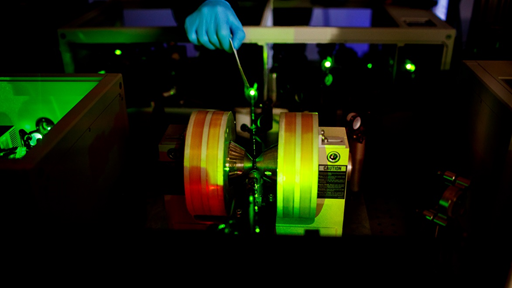Researchers from FAU Solar and the University of Alberta have achieved unprecedented control over inter-chromophore interactions, a critical aspect for optimizing materials in solar energy conversion and related applications.
In a collaborative effort led by Professors Rik R. Tykwinski and Dirk M. Guldi, a new series of molecular dimers based on pentacene was synthesized using a novel linker design. This innovative approach allows precise control over inter-chromophore interactions by strategically modifying the substitution pattern within the dimers. Unlike former molecular spacers that only modulate coupling strength, this novel design affords an unprecedent level of control.
The strength of these inter-chromophore interactions was investigated using Singlet Fission (SF), a photophysical process where one singlet exciton splits into two triplet excitons via an intermediate triplet pair state. SF offers the potential for highly efficient solar cells surpassing conventional conversion limits and, in addition, holds promise for quantum information applications. Thus, an enhanced understanding and therewith associated ability to control inter-chromophore coupling dynamics is crucial for the optimization of the SF process in future materials for various applications.
These findings were published in the Journal of the American Chemical Society (JACS) under the title “Controlling Interchromophore Coupling in Diamantane-Linked Pentacene Dimers To Create a ‘Binary’ Pair’”. This research represents a significant step forward in the development of materials for advanced solar energy technologies and spintronics.

Researchers from FAU Solar and the University of Alberta have achieved unprecedented control over inter-chromophore interactions, a critical aspect for optimizing materials in solar energy conversion and related applications.
In a collaborative effort led by Professors Rik R. Tykwinski and Dirk M. Guldi, a new series of molecular dimers based on pentacene was synthesized using a novel linker design. This innovative approach allows precise control over inter-chromophore interactions by strategically modifying the substitution pattern within the dimers. Unlike former molecular spacers that only modulate coupling strength, this novel design affords an unprecedent level of control.
The strength of these inter-chromophore interactions was investigated using Singlet Fission (SF), a photophysical process where one singlet exciton splits into two triplet excitons via an intermediate triplet pair state. SF offers the potential for highly efficient solar cells surpassing conventional conversion limits and, in addition, holds promise for quantum information applications. Thus, an enhanced understanding and therewith associated ability to control inter-chromophore coupling dynamics is crucial for the optimization of the SF process in future materials for various applications.
These findings were published in the Journal of the American Chemical Society (JACS) under the title “Controlling Interchromophore Coupling in Diamantane-Linked Pentacene Dimers To Create a ‘Binary’ Pair’”. This research represents a significant step forward in the development of materials for advanced solar energy technologies and spintronics.